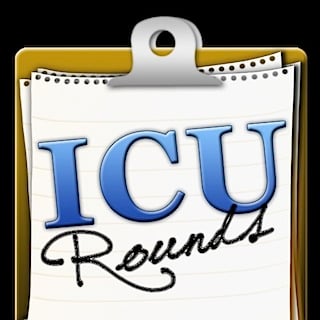Airway Pressure Release Ventilation (APRV) or BiVent: What the heck is this?
ICU Rounds
Jeffrey Guy
4.8 • 686 Ratings
🗓️ 20 May 2007
⏱️ 23 minutes
🧾️ Download transcript
Summary
Airway pressure release ventilation (APRV) is not a new mode of mechanical ventilation, but it seems to be gaining a great deal of popularity lately. Many people find this mode very complicated and thick that it is reserved only for the very ill. Neither one of these assumptions are corrrect. This mode is very easy to learn and use. Furthermore, this mode is very physiological and tolerated by all types of patients.
Transcript
Click on a timestamp to play from that location
| 0:00.0 | The topic today is APRV ventilation, or also known as by vent. |
| 0:05.0 | It is a mode of ventilation that has recently gained more and more attention and popularity. |
| 0:11.0 | It is by no means a new mode of ventilation. It's been around for some period of time. |
| 0:16.0 | Before we go into some of the mechanics and reasons the popular use of APRB, it's again important to review the concepts of PEP and CPAP. |
| 0:26.6 | We have previously talked on two separate episodes of the physiology of PEP as well as some of the negative implications of PEP. |
| 0:34.6 | For the point of review, PEP is end expitory pressure and supply during continuous |
| 0:41.3 | mechanical ventilation. |
| 0:43.3 | However, if one is providing pressure on a spontaneously breathing patient without partial |
| 0:48.3 | voluntary support, this is known as CPAP. |
| 0:51.3 | So simply put, peep is the pressure where we end exhalation on a mechanically |
| 0:57.0 | ventilated patient, hence peak respiratory, excuse positive end-exemptory pressure, and CPAP, or continuous |
| 1:04.0 | positive air pressure, is the pressure we apply to a circuit for a spontaneously breathing patient. |
| 1:15.6 | EPRV is a very unique mode of ventilation and often novices to mechanical ventilation are often confused |
| 1:20.6 | and intimidated by this mode of ventilation |
| 1:22.6 | because of the unique inspiratory |
| 1:25.6 | expatory phases that are associated with APRV. |
| 1:28.3 | The key to APRV ventilation is to imagine that you're not actually mechanically ventilating the patient. |
| 1:35.3 | It is a mode where you're trying to keep the patient as spontaneous as possible. |
| 1:40.3 | Now keep in mind the difference between PEEP and CPAP. |
| 1:43.3 | We said CPAP was continuous positive airway pressure |
| 1:47.4 | applied to a circuit to a patient who's spontaneously breathing. |
| 1:51.6 | Now if we took a patient, if we took someone who's awake, |
... |
Transcript will be available on the free plan in -6522 days. Upgrade to see the full transcript now.
Disclaimer: The podcast and artwork embedded on this page are from Jeffrey Guy, and are the property of its owner and not affiliated with or endorsed by Tapesearch.
Generated transcripts are the property of Jeffrey Guy and are distributed freely under the Fair Use doctrine. Transcripts generated by Tapesearch are not guaranteed to be accurate.
Copyright © Tapesearch 2025.

